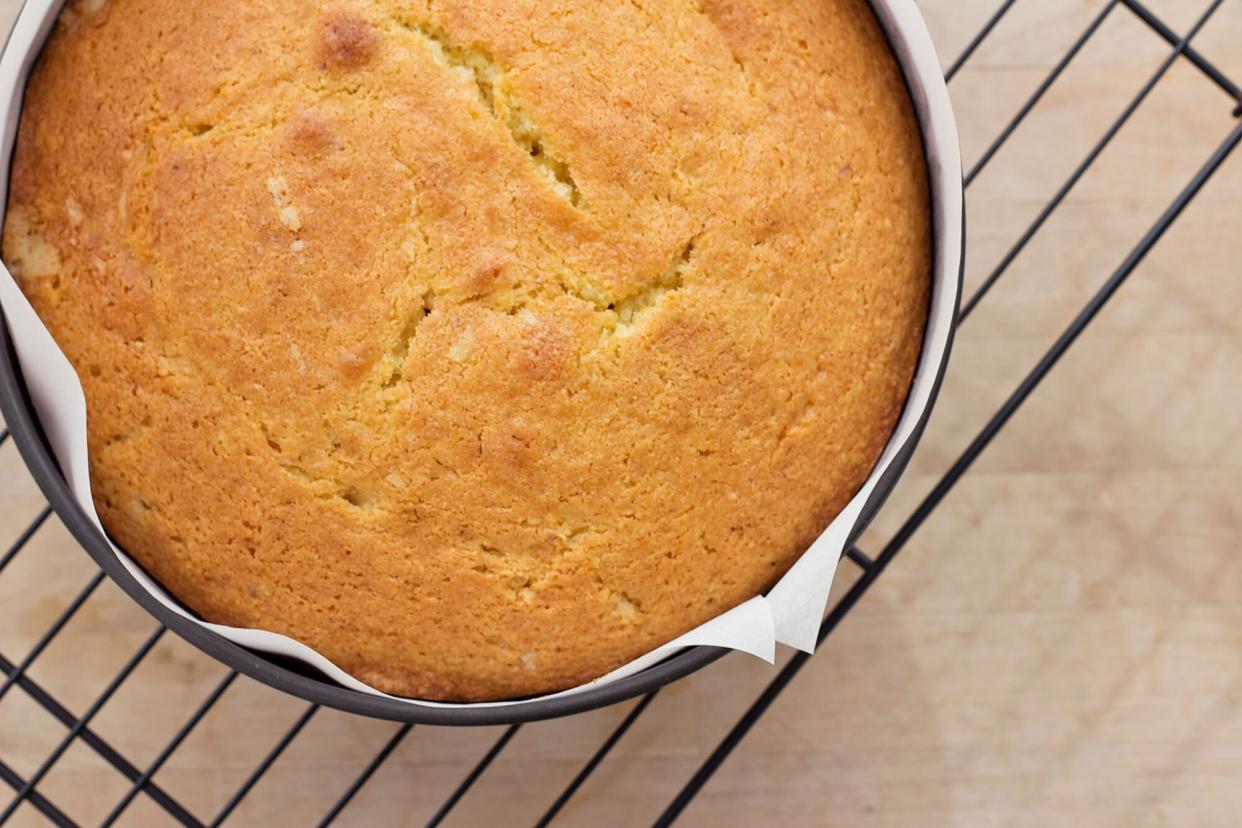What Does It Mean When a Recipe Calls for Lining a Cake Pan?

SawBear / Getty Images
There are few things more satisfying than baking a cake from scratch. However, as with all recipes, a successful homemade cake requires some prep and planning. Often, this includes lining the cake pan, a step that's usually listed in the recipe. What is a liner, and is this step actually necessary or can you make a good cake without it? We asked chefs for their take on lining cake pans.
Related: Why Organizing Your Ingredients Is the Key to Baking Success
Yes, You Should Line a Cake Pan
If a cake recipe instructs you to line the pan, it's best to do just that. In fact, it's absolutely necessary to follow this step, just like it's essential to use the listed ingredient measurements. As Traci Weintraub, chef and founder of Gracefully Fed, explains, "The main purpose of lining a cake pan is to prevent the baked good from sticking." This will make it easier to remove the cake, ensuring your sweet treat stays intact. "Lining your cake pan has the added benefit of producing more aesthetically pleasing cakes, as you'll end up with a more even color," says Weintraub. Plus, liners increase the longevity of your baking pans, she says. That's because the liner will minimize scratching or burning on your pans.
Are there some cakes or pans don't require a liner? "No-bake cakes, such as some cheesecakes or ice box cakes, generally don't need to be lined, particularly if you're serving directly from the pan," shares Weintraub. The same goes for angel food cake, which needs to cling to the sides of the pan in order to rise, she adds. In this case, lining (or greasing) the pan will prevent the angel food cake from gaining any height. Meanwhile, in terms of equipment, it might be safe to skip the liner when using straight-sided round cake pans that are less than two inches high, says Stephen Chavez, chef-instructor of pastry and baking arts at the Institute of Culinary Education. However, anything deeper than two inches is more likely to stick to cakes, he says. As for non-stick pans? Even those will benefit from liners, as they typically still need some assistance to prevent sticking, notes Chavez.
How to Properly Line a Cake Pan
To ensure your cake liner effectively serves its purpose, there are several things to keep in mind. The best material to use is traditional parchment paper, which you should be able to find at any grocery store, says Weintraub. She advises against using aluminum foil, as it can yield a misshapen cake—though it can be used if you're out of parchment paper. Also, "it's mandatory to line the bottom [of the pan], but the sides are optional," says Chavez. The advantage of lining the sides is that it creates a "collar," allowing the batter to rise above the top of the pan without spilling over. "The disadvantage is that [it can sometimes] distort the top sides of the cake, so you don't end up with perfectly [smooth] sides," shares Chavez.
Before actually lining a cake pan, Weintraub recommends coating it with cooking spray. "This will make the job of lining the pan much easier, as it will give the parchment paper something to stick to," she explains. From there, "trace the bottom of the pan onto the paper and cut out the circle," says Chavez. "I find it easier to cut multiple circles at one time by folding the paper first and then cutting. If you're using a full sheet pan-sized paper, you should be able to get two 10-inch circles, four eight-inch circles, [or] eight six-inch circles per sheet," he shares. Next, to cut a strip of paper for the sides, "stand the pan on its side, mark a point on the pan, then roll the pan until you come back to your original mark," explains Chavez. This will indicate the total length of paper needed to line the sides. Finally, cut the paper strip so that it's about one inch taller than the sides of the pan. "For example, if the cake pan is two inches deep, then you want your side strip to be three inches tall," says Chavez. This will let the batter rise above the cake pan edge while giving you something to grab and lift your cake.
What to Do If You Don't Have Parchment Paper
"If you don't have parchment paper on hand, the next best option is to grease your pan," shares Weintraub. Using a baking spray is your best bet rather than using butter, as it will be easier to grease the corners of a square or rectangle baking pan. For an even cleaner bake, Weintraub recommends adding a thin layer of flour on top of the oil or butter.

